 NEWS AND NOTES
NEWS AND NOTES NEWS AND NOTES
NEWS AND NOTES GLOSSARY/GLOSSAIRE/GLOSARIO |
|
HOW MANY PEOPLE USE FUELWOOD FOR COOKING? |
The European Agriculture and Forestry Biomass Network (AFBnet) concentrates on actions to promote biomass utilization and business opportunities in Europe. AFBnet brings together industry representatives from 14 European Union (EU) countries in a "whole chain" approach to stimulate the commercial and industrial exploitation of biomass energy in Europe.
Established in January 1995, the network is managed by VTT Energy (as of 1999) and ETSU (1995-98) and is supported by the Directorate-General for Transport and Energy (DG-TREN) of the European Commission under its ALTENER Programme.
There are national coordinators in 14 EU member countries with good links to their national biomass industries. Organizations participating as national coordinators are: BLT (Austria), ERBE (Belgium), DTI (Denmark), VTT Energy (Finland), ADEME (France), FNR (Germany), CRES (Greece), TRBDI (Ireland), ITABIA (Italy), NOVEM (the Netherlands), CBE (Portugal), IDEA (Spain) and AEA Technology, ETSU (United Kingdom).
For more information, please contact:
VTT Energy,
Koivurannantie 1, PO Box 1603, FIN-40101 Jyväskylä, Finland.
Fax:
+358 14 672 597;
www.vtt.fi/virtual/afbnet/
Wood gasification at Amer power station
The new gasification system at the Amer power station will secure improvements in all areas. The system, which has been designed especially for the gasification of demolition wood and waste wood, was built by the Netherlands company EPZ for Amergas BV, a fifty-fifty joint venture between Energy Systems and EPZ. The plant entered into service in 2000.

About 150 000 tonnes of demolition wood will be gasified every No. 9 cogeneration unit. Hence, the sustainable fuelwood will partially replace the fossil fuel (coal), which is the main energy carrier fired in Amer’s unit No. 9.
Savings in coal consumption of 70 000 tonnes per
year. |
The energy efficiency of the process, by which electricity will be generated from wood, is high and the emissions will be very low because effective gas cleaning systems have been installed in the plant.
A relatively small amount of residues (ashes) remains. The ashes will be used as a raw material for the construction of industrial materials.
From the summer of 2000, 150 000 tonnes of demolition wood per year will be gasified using the new system installed at the Amer power station. The net conversion efficiency of the process by which (pure) electricity will be generated from wood is expected to be 35 percent. In the case of cogeneration, when both heat and power are generated, the total efficiency will reach 50 percent.
These figures will make Amergas one of the Netherlands’ biggest projects for the reduction of CO2 emissions.
For more information, please contact:
Amergas BV, PO
Box 711, 5600 AS Eindhoven, the Netherlands.
Fax: +31 40 257 22 00.
Spirit of the road
With the United States about to ban the fuel additive methyl tertiary-butyl ether (MTBE), battle has commenced over its successor. Could this be the chance the ethanol industry has been waiting for?
It was once the hero of the oil industry. The fuel additive MTBE was supposed to be the answer to air pollution. Instead, it turned out to be a villain, causing groundwater pollution that has left aquifers from New England to California reeking. Now, with the United States on the brink of banning MTBE, the question is: What will come next?
American farmers are hoping it will be alcohol. Like MTBE, ethanol can reduce emissions from cars. Unlike MTBE, any ethanol that leaks into the environment quickly breaks down. And farmers love it because most ethanol is produced from maize, so it promises to be a lucrative new market for their crops. "Depending on how it’s handled, the MTBE phase-out could be a huge boost for the ethanol industry", says Monte Shaw of the Renewable Fuels Association in Washington, DC. "This is the year."
Once seen as a potential fuel in its own right, ethanol proved too expensive to compete with petrol. There are exceptions, such as Brazil, where fuel is up to 24 percent ethanol made from sugar cane — but only with the help of government subsidies.

In the United States, ethanol’s first hope of hitting the big time came with the Clean Air Act of 1990, which required petrol sold in polluted cities to contain at least 2 percent of oxygen by weight. This means that petrol must be around 6 percent ethanol by volume, or 11 percent MTBE - a huge market.
By releasing oxygen when the fuel is burned, these "oxygenates" ensure complete combustion, particularly when engines are cold. This reduces the levels of pollutants such as carbon monoxide.
The fledgling ethanol industry, however, lost out to cheaper MTBE. Then MTBE began to turn up in wells, lakes and aquifers around the country. "Santa Monica has lost its entire groundwater supply," says Bill Magavern of the environmental group Sierra Club California. The trouble is that MTBE is water-soluble, therefore leaks from underground tanks can spread through water supplies.
Apart from the United States, few countries make much use of MTBE. But, in Europe its future could be boosted by plans to remove benzene from petrol. The European Union intends to cut the level of this potent carcinogen in fuel by 75 percent by 2005, which could lead to a big increase in the use of MTBE.
The crucial questions are whether the 2 percent oxygen requirement will survive a ban on MTBE, and whether the law will stipulate that renewable fuels should be gradually introduced. Either would be a boost for ethanol — but both would be fiercely opposed by oil companies. (Source: New Scientist, 20 January 2001.)
En Uruguay se estudia la posibilidad de producir biodiesel con inversión extranjera
En el Uruguay el fomento de la producción de biodiesel, combustible derivado de aceites vegetales, será analizado en los próximos meses por una comisión especial integrada por técnicos de ANCAP (la compañía estatal de combustibles) y de tres ministerios.
La posibilidad de producir combustible a partir de fuentes renovables, se viene analizando desde que una delegación de inversionistas italianos mostró interés en asociarse con ANCAP para la siembra de girasol en este país. Este combustible que puede ser utilizado sin inconvenientes por cualquier motor diesel, por lo que no implicaría grandes cambios desde este punto de vista, presenta grandes ventajas ambientales y a la vez refuerza la posibilidad de comenzar a independizarse de la importación de petróleo.
La propuesta es sembrar alrededor de 50 mil hectáreas de girasol para destinarlas a la producción de este combustible ecológico. La importancia de este proyecto para la producción agrícola es considerable, si se tiene en cuenta que en la actual campaña de verano el área sembrada con girasol asciende a unas 51 mil hectáreas.
Los técnicos investigarán qué volumen de aceite crudo podría constituir la demanda, qué impacto fiscal tendría tanto por la mayor actividad agrícola como por el menor uso de gasoil, y cómo afectaría las importaciones de este último producto derivado del petróleo.
La producción de biodiesel es a veces más cara que la del gasoil, pero los precios se equiparan si se considera la subida del precio del petróleo y la extrema debilidad del de los aceites vegetales; sin contar las ventajas de estos últimos desde el punto de vista ambiental que están apuntalando su desarrollo en todo el mundo. (Fuente: El Globo, República Argentina; www.ambienteyenergia.com/htms/home.html)
Data Collection and Analysis for Sustainable Forest Management in African, Caribbean and Pacific Countries — Linking National and International Efforts (GCP/INT/679/EC)
The overall aim of this four-year programme, jointly funded by FAO and the European Commission (Directorate-General Development), is to strengthen national capacity to collect and compile reliable and current information on forestry and analyse the forest sector (for further information on the programme, visit: www.fao.org/forestry/fon/fons/outlook/africa/acppro-e.stm ).
Sustainable Forest Management Programme in African ACP Countries (GCP/RAF/354/EC)
The following is a brief update on the activities of the Wood Energy Planning and Policy Development component (WEPP) of project GCP/RAF/354/EC.
Country studies.
After we last reported on the TCDC wood energy country studies {see Forest Energy Forum No. 6), seven more studies have been completed and reviewed. To date, the reports from the following 23 countries have been reviewed and compared with the estimates produced by the regional study The role of wood energy in Africa of the Wood Energy Today for Tomorrow (WETT) series,
which revised woodfuel consumption data in 55 African countries: Burkina Faso,
Burundi, Cameroon, Central African Republic, Chad, Comoros, Eritrea, the Gambia,
Guinea, Guinea-Bissau, Lesotho, Liberia, Mali, Mauritania, Mozambique, Namibia,
the Niger, Senegal, Seychelles, Sierra Leone, Somalia, the Sudan and Zambia.
It is worth recalling that these studies were carried out to:
• review existing woodfuel data available at the country
level;
• compare this information with the country estimates published in
the regional WETT study; and
• analyse trends in the current demand/supply balance and attempt projections.
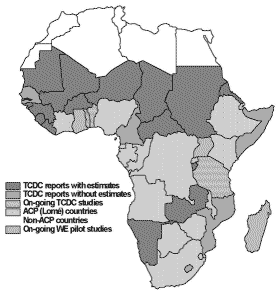 |
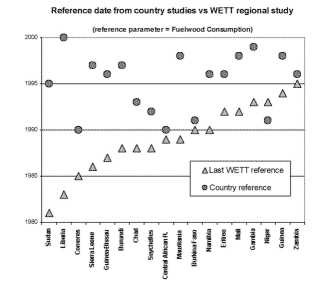 |
The review of these studies revealed a wealth of information, although very heterogeneous and often more qualitative than quantitative. The temporal baseline provided is considerably more recent than that available from regional and international databases, as shown in Graph 1.
However, the availability and, most important, the reliability of information seems to be still weak in most countries and much needs to be done to raise the role of wood energy information to the level needed to support sustainable planning.
Particularly serious seems to be the situation concerning woodfuel supply sources, not to mention the sustainability of such sources. The concern about the rapid growth of charcoal demand, hence production, is symptomatic. The impact on natural forests and wooded lands associated with charcoal making is greatly feared by most authors, but there are very few data supporting, or contradicting, that fear.
As was outlined in Forest Energy Forum No. 6, WEPP activities present two main phases: the first focused on wood energy information at the national and regional levels, and the second focused on the national capabilities to formulate adequate policies and to plan the wood energy sector on the principles of sustainable resource management.
We are now concluding the first phase and initiating the second, and the regional workshop in Togo (see below) will represent an excellent occasion to review the quality of wood energy information and the role it plays in the formulation of national policies. We know we will have to review the many gaps and problems, but we are confident that our highly qualified participants will produce well-focused diagnostics and will recommend practical priority actions.
As part of the plan of work, WEPP will implement four pilot studies aimed at enhancing national capacities for planning and implementing sustainable wood energy systems. Activities are now starting in Ghana, assisting the Forestry and Energy Commissions in woodfuels data collection and analysis for sector planning. Initial discussions are under way for other pilot activities in Benin, Zimbabwe and Eritrea. (Contributed by: Rudi Drigo, Consultant, Wood Energy Programme, Forest Products Division, FAO.)
Wood energy information in Africa.
The first
regional workshop on Wood Energy Information Systems for Africa took place in
Kenya in October 2000 and was aimed at English-speaking African countries. (The
proceedings have been printed and copies are available free of charge from FAO’s
Wood Energy Programme; they are also accessible at www.fao.org/forestry/energy.stm
or www.fao.org/docrep/003/x9909e/x9909e00.htm)
 A second workshop, covering French-speaking African countries, will take place in Lome, Togo, in June 2001. The meeting will be a cooperative initiative of FAO, the European Commission, the RPTES Programme of the World Bank, the Institut de l’énergie et de l’environnement de la francophonie (IEPF) and the United Nations Environment Programme (UNEP). Participants are expected from 19 countries (Benin, Burkina Faso, Burundi, Cameroon, Central African Republic, Chad, Comoros, Côte d’Ivoire, Guinea, Guinea-Bissau, Madagascar, Mali, Mauritania, Morocco, the Niger, Rwanda, Senegal, Togo and Tunisia).
A second workshop, covering French-speaking African countries, will take place in Lome, Togo, in June 2001. The meeting will be a cooperative initiative of FAO, the European Commission, the RPTES Programme of the World Bank, the Institut de l’énergie et de l’environnement de la francophonie (IEPF) and the United Nations Environment Programme (UNEP). Participants are expected from 19 countries (Benin, Burkina Faso, Burundi, Cameroon, Central African Republic, Chad, Comoros, Côte d’Ivoire, Guinea, Guinea-Bissau, Madagascar, Mali, Mauritania, Morocco, the Niger, Rwanda, Senegal, Togo and Tunisia).
Themes covered will include: i) a diagnostic of the status of wood energy information and of current national and international capacities to collect and use wood energy information for planning and policy development; and ii) a definition of new actions and synergies to support and develop such capacities.
The meeting will build on the experience gained and conclusion defined during the first workshop. Both workshops form part of the activities funded within the framework of the Wood Energy Planning and Policy Development (WEPP) component of the Sustainable Forest Management Programme in African ACP Countries (GCP/RAF/354/EC), EC-FAO Partnership Programme.
For more information, please contact:
Mr Pape Koné,
Senior Forestry Officer, Regional Office for Africa (RAF), PO Box 1628, Accra,
Ghana.
Fax: +233 21 244079;
e-mail: [email protected] ; or
Miguel Trossero, at the address given on the
first page.
[Please see Forest Energy Forum Nos 6 and 7 for more information on this programme.]
FAO y la Comunidad Europea: Proyecto GCP/RLA/133/EC — Información y análisis para el manejo forestal sostenible
Este proyecto, integrando esfuerzos nacionales e internacionales de los países de América Latina, persigue mejorar la calidad, cobertura y acceso a la información forestal, ya sea en materia de manejo como de administración forestal, incluyendo instituciones nacionales gubernamentales responsables del sector forestal, instituciones de investigación, el sector privado, organizaciones conservacionistas, inversionistas nacionales y extranjeros, países donantes y el público en general.
El proyecto desarrollará un análisis estratégico del sector forestal, que identifique las condiciones emergentes del mercado, los desarrollos tecnológicos, y las tendencias y perspectivas que podrían motivar revisiones de la política forestal de los países involucrados.
En apoyo a estas necesidades detectadas en América Latina, la Comunidad Europea, promotora del desarrollo forestal en muchos países de la región, ha cofinanciado con la FAO este proyecto para el período 2000-2003, que será ejecutado por la FAO. El proyecto se desarrollará en 17 países de la región:

• países centroamericanos: Costa Rica, El Salvador,
Guatemala, Honduras, Nicaragua y Panamá;
• países amazónicos: Bolivia,
Brasil, Colombia, Ecuador, Perú y Venezuela;
• países templados y subtropicales: Argentina, Chile, México, Paraguay y Uruguay.
El proyecto pretende analizar el estado actual de la información forestal en aspectos tales como: recursos forestales, manejo forestal, arboles fuera del bosque, cambio de uso de la tierra, productos forestales, productos forestales no madereros, madera para energía, aspectos socioeconómicos e institucionales.
El personal del proyecto trabajará en estrecho contacto con los coordinadores nacionales de los países, nombrados por sus respectivos gobiernos, y con el grupo de trabajo de la FAO. Se busca así el logro de los objetivos del proyecto a través de un gran esfuerzo conjunto. Entre otras, están previstas las siguientes actividades:
• talleres temáticos sobre información forestal en
diferentes países;
• consultorías en los países para determinar el estado
actual de la información forestal;
• informes subregionales sobre diferentes tópicos forestales.
| ESTUDIO REGIONAL — EL ROL DE LA ENERGÍA
DE LA MADERA EN AMÉRICA LATINA Y EL CARIBE Las iniciativas de la FAO en el campo de la energía de la madera han incluido, dentro de sus actuales actividades del programa regular, el desarrollo de una base de datos mejorada sobre combustibles de madera y energía de la madera. Esta iniciativa se está llevando a cabo a través de diferentes enfoques, mecanismos y actividades complementarias, una de las cuales es Energía de la madera hoy para mañana (Wood Energy Today for Tomorrow [WETT]). Energía de la madera hoy para mañana (WETT), a través de la preparación de ´estudios regionalesª, recopila, analiza y sistematiza la información y datos existentes sobre combustibles de la madera y sus aspectos relacionados con la energía a nivel nacional. El principal objetivo de estos estudios es contribuir a superar las limitaciones que se han identificado en las principales bases de datos de energía de la madera, supliendo las principales carencias de datos. La mayor disponibilidad y confiabilidad de datos sobre energía de madera contribuirá a:
• describir de una manera mas apropiada la contribución de los bosques, las tierras con vocación forestal y los árboles al sector energético; • evaluar los impactos ambientales; e identificar las principales áreas problemáticas críticas a ser enfrentadas para desarrollar sistemas sostenibles de energía de la madera. También se espera que la mejora desarrollada en los datos sobre energía de la madera contribuya a posibilitar un mayor entendimiento de los sistemas de energía de la madera y a la planificación de una producción y utilización más sostenible de los combustibles de madera. Adicionalmente, WETT constituirá una fuente de información esencial para las evaluaciones de los recursos forestales, las estadísticas mejoradas de productos forestales, los estudios globales y la evaluación de los bosques. El Departamento de Montes de la FAO también lleva a cabo otros estudios como parte de la evaluación periódica del estado de los recursos forestales y para la presentación de mejores datos estadísticos sobre los productos forestales en ámbito mundial. Contribuye de esta manera a la mejor comprensión del papel multidisciplinario de los bosques, las tierras con vocación forestal y los árboles, y a la planificación de un manejo más sostenible de los mismos, conjuntamente con la promoción de sistemas energéticos más ´verdesª y ambientalmente aceptables. Este estudio regional, realizado en le marco del proyecto GCP/RLA/133/EC - Información y análisis para el manejo forestal sostenible, ha sido realizado por el Ing. E. Beaumont, con la valiosa colaboración de diversos expertos. El estudio presenta una apreciación global del consumo total de energía de madera en los países latinoamericanos, basándose en la información disponible en organizaciones internacionales seleccionadas, y propone algunas recomendaciones para el mejoramiento futuro de los Sistemas de información de madera para energía. |
Para más información, dirigirse a:
Jorge Morales,
Coordinador Proyecto,
Oficina
Regional de la FAO para América Latina y el Caribe,
Casilla 10095,
Santiago, Chile.
Fax: +56 2 3372101/2/3;
correo
electrónico: [email protected];
www.rlc.fao.org/proyecto/rla133ec/frames.htm
Are you up to speed with the fuel cell developments of today? Fuel cells will become the "norm" in many applications in the coming decade — you will be using one yourself in an everyday role within this time scale, whether for transport or energy supply or in an industrial application. Coal will have a role in helping to power this new version of electric power production: coal equals hydrogen equals electricity via the fuel cell of today’s world.
The production of hydrogen for fuel cell usage is also one possible solution to obtaining energy from fossil fuels with near-zero emissions of greenhouse gases to atmosphere — and, what is important, a way of achieving this without significantly increasing energy costs.
Fuel cells offer a range of opportunities for transportation, combined heat and power (CHP) and power generation such that exploration and research into development of fuel cell technologies will only intensify. As hydrogen production technologies become more efficient and therefore cost-effective, the potential for coal to offer realistic solutions to the international community concern over possible global climate change should be viewed as an opportunity that needs full industry, political and public support.

Fuel cells can use a variety of fuels (natural gas, petroleum, methanol, hydrogen, etc.) to produce electricity through a non-combustion electrochemical reaction. The fuel used directly is hydrogen, usually reformed from hydrocarbon fuels. A catalyst splits the hydrogen molecules into electrons and protons. The protons pass through an electrolyte membrane, while the electrons create an electrical current. The electrons and protons are then reunited and combined with oxygen to create water. The process also creates heat. (Source: Electric Perspectives, May-June 2000.)
Would biofuels make a similar contribution? What do you think of this new technology? Will it help or hamper bioenergy development? Please send your comments to Miguel Trossero at the address given on the first page.
The Shell Foundation has recently launched a series of Sustainable Energy Dialogues focusing on identifying the key issues that promise to have a real impact on the quality of people’s lives.
The themes for the first series of dialogues are:
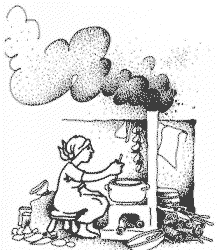
1. Modern biomass: using modern biomass as a sustainable energy source to reduce poverty.
2. Energy services: innovating to deliver modern energy services to poor communities in developing countries.
3. Household energy: breaking the link between traditional patterns of household energy use and poor health in women and children.
4. Urban transport: designing "effective" solutions to the urban transport-environment dilemma.
This survey, which is being carried out by Dr Grant Ballard-Tremeer (a member of the Household Energy Network (HEDON]) can be completed on line.
For more information, please contact:
Dr Grant
Ballard-Tremeer, BTG biomass technology group, c/o University of Twente, PO Box
217, 7500 AE Enschede, the
Netherlands.
E-mail: [email protected];
http://ecoharmony.net/hedon/survey
[There is more information in this section on the initiatives of the Shell Foundation.]
LEAP2000, the new Windows-based version of the Long-range Energy Alternatives Planning software system (LEAP) is now available. The software has been created as part of a three-year initiative led by the Boston Center of the Stockholm Environment Institute at Tellus Institute in collaboration with institutions from both industrialized and developing countries. The initiative has been funded by the Netherlands Ministry of Foreign Affairs.
LEAP2000 is an integrated, end use-oriented accounting tool for studying energy and environmental scenarios. Its uses include integrated energy planning, greenhouse gas mitigation studies, demand and supply forecasting and economic cost-benefit analysis of energy policies and measures. It can be applied in international, national, and local applications, including studies of both industrialized and developing country energy systems.
The full system is free for non-profit organizations from developing countries. (Source: Listserv: [email protected])
For more information, including links for
downloading an evaluation version of the software (a 13MB file) or to order a CD
ROM version, please visit the HEDON Web page (the News section): http://ecoharmony.net/hedon ; or contact: Mr Charles Heaps, SEI-Boston, 11 Arlington Street, Boston, MA 02116-3411, USA. Fax: +1 617 266 8303;
e-mail: [email protected]
[Please see Forest Energy Forum Nos 1 and 4 for more information.]
Pressures for micropower-friendly market reform are building. A swelling number of small new electric companies, as well as spin-offs of big utilities and energy multinationals, are springing up between Connecticut and Calcutta, ready to put central power stations out of business or to help people turn on the lights for the first time. In addition, as consumers become increasingly able to choose their power suppliers, marketers will have no option but to give customers what they want, and evidence to date suggests they want reliable electricity from clean sources. From the San Francisco Bay area to Bangladesh, venture capitals and microcredit models are being used to finance micropower, helping "start-up" companies survive their revenue-losing early years and enabling potential customers to surmount the high first cost of the new technologies.
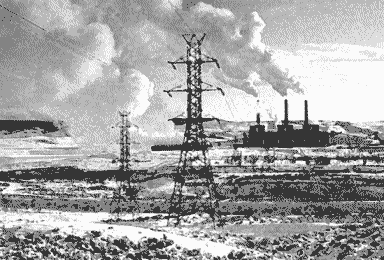
The most important determinant of how far and how fast such systems emerge may be less technical, regulatory or financial than institutional. Micropower may represent what management experts call a disruptive technology, one whose potential is greatly underestimated at first but whose eventual popularity topples unprepared companies and takes analysts by surprise. By developing the appropriate micropower "software" — the institutional base of support — businesses, government, and civil society can prepare for such change, and facilitate broader public understanding, acceptance, and use of the new technologies.
It is difficult to gauge haw much electricity may come from micropower in 10, 25 or 50 years’ time. Historians remind us that technical systems are formed at the intersection of technologies and values. But electric power systems are also the cause and effect of social change, and events of recent decades suggest that such change is not always gradual. Indeed, if upheavals in political systems are any guide, structural shifts can occur with surprising speed when people stop taking the dominant paradigm for granted. The large-scale electricity model appears to be collapsing under its own economic and ecological weight, creating big opportunities for a little approach. (Source: World Watch Paper No. 151, Micropower — the next electrical era, Seth Dunn, July 2000.)
I think micropower will become a great possibility for many bioenergy options. What do you think? (Miguel Trossero)
The Renewable Energy Development Institute (REDI) is a non-profit public utility institute promoting efficient, locally produced devices for cooking, heating, and water treatment, using as much as possible renewable sources of energy, for the benefit of the needy populations.
Based in Geneva, Switzerland, this group of retired professionals from industry, technical high schools and the international world has been working for more than 20 years in the development of stoves and burners which:
• are highly fuel efficient (test records available);
• can be manufactured locally at low cost;
• can use a variety of fuel,
including waste sump-oil and vegetable oils; and
• can safely be used by local people.
The benefits of these devices have been demonstrated on a practical scale in: Somalia, Bosnia-Herzegovina, Chechnya, Myanmar, the Democratic People’s Republic of Korea, Haiti, Cape Verde, Burkina Faso, Paraguay, China, the United Republic of Tanzania and Kenya, as well as in Afghan refugee camps in northwestern Pakistan.
Deforestation is reaching catastrophic proportions in many developing countries. The fuelwood needed for cooking or heating is becoming increasingly rare and expensive. Population movements towards urban areas have created shanty towns in which a biomass fuel is rarely available.
REDI believes that a positive step towards the solution of this problem is actually the increased use of alternative fuels for fuelwood such as liquid fossil fuels or gas or, better still, vegetable oils.
For more information, please contact:
Waclaw Micuta,
President, REDI, 5 rue du Vidollet,
1202 Geneva, Switzerland.
Fax:
+41 22 7335049;
e-mail [email protected] or [email protected];
www.redi-geneva.ch
A new CD-ROM on "Biomass Gasification" has been launched by LIOR International. This interactive encyclopaedia of the most up-to-date biomass gasification technologies, richly illustrated with layouts, plans and photos of plants/gasifier schemes, is the perfect training and presentation tool.
This CD-ROM is the latest in the unique and highly successful CD-ROM collection on "Solutions for the Environment".
For more information, please contact:
Mr Bruce Douglas,
Public Relations Manager, LIOR
International N.V.,
78 JB Charlierlaan,
B-1560 Hoeilaart,
Belgium.
Fax: +32 2305 1010;
e-mail: [email protected];
www.lior-int.com
[See Forest Energy Forum No. 6 for more information.]

The purpose of the Shell Foundation Sustainable Energy Books for Africa project is to provide African institutions better access to literature on understanding and dealing with energy and poverty. The project recognizes that, despite considerable advances in the Internet, paper-based material will remain a major source of knowledge for many people.
ITDG Publishing operates the project, with funds from the Shell Foundation’s Sustainable Energy Programme. One of the main purposes of the foundation is to improve access to sustainable energy services for poor communities in developing countries.
The Sustainable Energy Books for Africa catalogue includes selected key books intended to help those working to improve access to energy services for poor people in Africa. Most publications are priced but some of those listed are free of charge. A second, revised edition of the catalogue is planned for 2001. ITDG Publishing welcomes suggestions for titles to be included, especially books published in Africa.
For more information, please contact:
Intermediate Technology Publications Ltd,
103-105
Southampton Row,
London WC1B 4HH, UK.
Fax:
+44 20 7436 2013;
e-mail: [email protected];
www.itpubs.org.uk or
www.shellfoundation.org/sep
Aprovecho
Aprovecho, a non-profit organization, is a centre for research, experimentation and education on alternative technologies that are ecologically sustainable and culturally responsive. One of Aprovecho’s goals is to build fuel-efficient, smoke-free stoves for people all over the world. Aprovecho’s bilingual stove technicians are available for long-term projects that include research and development at their school in Oregon, hands-on construction, project supervision and field-testing.
First factory in Nicaragua produces Ecostoves, Rocket stoves, bread ovens and hayboxes

In the spring of 2000, three members from Aprovecho, through funding made possible by Trees, Water and People, built stoves in Honduras and Nicaragua. Their goal was to replace inefficient three-stone fires wherever possible and introduce Aprovecho’s fuel-efficient designs: the Rocket stove (a single pot stove without chimney); the Ecostove (a stove that incorporates the fuel-efficient rocket combustion chamber with a metal multipot cooking surface and a metal chimney); and the haybox (an insulated fireless cooker made from synthetic material).
During their visit, Aprovecho’s technicians:
• provided technical assistance for Prolena Nicaragua to construct a portable fuel-efficient stove and assisted in the writing of a US$800 000 proposal to build 50 000 stoves;
• assisted in setting up three micro-enterprises in Honduras and Nicaragua that are now selling, without subsidy, Ecostoves (aka Justa stoves), Rocket stoves and hayboxes;
• conducted extensive research that showed the Rocket stove and the Ecostoves as having a 100 percent and a 38 percent increase in efficiency over the local three-stone fire, respectively. Cooking tests performed in Managua demonstrated a 40 percent reduction of fuelwood consumption for local families over a one-week period;
• ascertained that emission testing performed in conjunction with University of California at Berkeley showed the Rocket stove to be one of the most effective low-emission stoves that they had ever tested;
• delivered a one day-workshop for Peace Corps Honduras, a two-day workshop for Peace Corps Nicaragua, and a two-day workshop for Nicaraguan non-governmental organizations on stove construction and operation;
• in Nicaragua, built two Winiarski bread ovens and two Ecostoves that incorporated small bread ovens. All of these are in use and are receiving very high levels of consumer acceptance;
• offered technical assistance to Prolena Honduras, a group that is coordinating two stove projects with the aim of building 1 000 stoves.
According to cooking surveys conducted by Prolena Nicaragua, families in Managua used 40 percent less wood with the Ecostove. Of all users, the women who make and sell tortillas had the greatest savings, which is not surprising given the amount of wood that is normally used to cook tortillas. In the Aprovecho survey, many women reported that they use between 30 and 50 percent of all their wood just for cooking tortillas. Tortilla vendors often spend six to eight hours per day making tortillas. This involves cooking over an open fire and inhaling large amounts of smoke. Studies have shown that these women can inhale an amount of smoke equal to smoking 20 packs of cigarettes per day.
The Ecostove eliminates many of the challenges faced by the women and its large surface allows them to cook many tortillas, up to eight at one time.
For more information, please contact:
Aprovecho
Research Center,
80574 Hazelton Road,
Cottage Grove,
Oregon
97424-8521, USA.
Fax: +1 541 942 0302;
e-mail: [email protected];
www.efn.org/~apro/
Glow
Glow, published by the Asia Regional Cookstove Program, is a forum for exchange of experiences and ideas on cooking stoves and related issues. Glow wants to share your work and discoveries with its readers. Each edition of Glow is published with a specific theme; however, contributions are welcomed on thematic as well non-thematic articles.
The June 2001 edition (vol. 24) covers the various aspects of biomass utilization. Biomass residues are still widely used as the primary fuel in the developing world. Traditional utilization of biomass residues is associated with a low level of efficiency and a high level of smoke emissions, which are detrimental to the environment as well as to the health of the users. This is despite the existence of various models of improved stoves for loose biomass residues and biomass upgrading technology; but these have not been widely disseminated, owing to a variety of reasons, technical or otherwise.
Themes to be covered in forthcoming issues of Glow include:
Incorporation of gender in ICS
(August 2001)

Benefits to women’s development have been cited in favour of the improved cookstove (ICS): reduced cooking and fuel collection time; reduced negative health impacts caused by smoke; and women provided with the opportunity of becoming primary actors in a development project.
Unfortunately, adoption of ICS is far less than expected. This is mainly because in many ICS programmes the specific needs of the users (mostly women) were not taken into account in the formulation of the planning and solutions. In many cases, the improved cooking stove introduced is a new piece of equipment requiring new ways of cooking and, in most cases, does not serve the user’s needs. However, there have been reports of more successful ICS programmes when the users were involved. In other words, had a gender approach been applied, in which all involved are taken into account in the programme formulation, there would have been a more successful result. Yet, in the field of ICS, little attention has been given to the integration of gender in ICS programmes.
For this issue, Glow is calling for submissions of case studies and articles on gender incorporation in stove programmes.
Indigenous knowledge in biomass stoves and fuel conservation practices (November 2001)
Traditional stoves vary in their design, size, materials and methods of construction. The stoves represent the accumulation of knowledge resulting from generations of use and development by users and builders. Communities using biomass have also evolved various fuel-conserving cooking practices. The fact that traditional stoves and stove materials are still widely used suggests that beneficial aspects of indigenous knowledge are still appreciated by users and builders. The case for traditional fuel-conserving practices is rather different, since some of these practices have long been forgotten or are no longer considered practical.
Potentials exist for the beneficial application/adaptation of indigenous knowledge. Yet, there has been no systematic study or documentation of indigenous knowledge aspects in stove technology and fuel-conserving practices in Asia.
This edition of Glow will facilitate the documentation of indigenous knowledge in stove technology and fuel-conserving practices.
For more information, please contact:
The ARECOP
Secretariat (Glow Article),
JL. Kaliurang, km 7,
GG. Jurug Sari
IV/19,
PO Box 19, YKBS,
Yogyakarta 55281,
Indonesia.
e-mail: [email protected] or [email protected]
The Thomas R. Miles Award for Excellence in Bioenergy will be presented at the Fifth Biomass Conference of the Americas to be held in Orlando, Florida, USA from 17 to 21 September 2001. This award will be the second in a series to be given in honour of Thomas R. Miles Sr, who exemplified excellence in the field of bioenergy and provided invaluable service to the biomass energy industry of the United States.
Over the course of his career, Miles completed more than 700 projects in the wood products, food, agricultural and energy industries and was awarded 20 patents. In 1994, he received the First Annual Award for Pre-eminent Contributions to Biomass Energy from the Biomass Energy Research Association.
This award honours and recognizes individuals who have made important contributions and distinguished themselves by providing services of excellence in the field of bioenergy and to the biomass energy industry. The criteria used for selecting the award winner consist of the following:
• type of services provided to the biomass energy
industry;
• tlength of service provided (length of career);
• toriginal
contributions made in the area of biomass energy; and
• textent to which the
provided services and contributions have benefited the biomass energy industry.
Nominations for the Thomas R. Miles Award are being solicited widely from the biomass and bioenergy community. Nominations are to be received by Tom Milne no later than 17 July 2001.
For more information, please contact:
Thomas A. Milne,
National Renewable Energy
Laboratory,
1617 Cole Blvd, MS-3322,
Golden, CO 80401-3393, USA.
Fax:
+1 303 384 6363;
e-mail: [email protected]
[See Forest Energy Forum No. 6 for more information on the Fifth Biomass Conference.]
International training courses
The Technology and Development Group (TDG) of the University of Twente in the Netherlands is a multidisciplinary group active in research, consultancy and training. It specializes in the study of technology transfer, production management, project planning, technology, policy, rural development and evaluation studies. Special activities are directed to energy and environment problems in developing countries.
One of the core activities of TDG is the organization of international courses on energy and environmental subjects, both in the Netherlands and in other countries.
The "Energy Management and Cleaner Production in Small and Medium Scale Industries" is an international course for the public and private sector involved in energy conservation and environmental protection in industries. Since industry is a major user of energy, the issue of energy management is increasing in importance, both in financial and environmental terms. How industries can reduce their costs and benefit the environment is the focus of the course.
In 2000, the 21 participants attending the course came from: Albania, Ethiopia, India, Kenya, Nepal, Nigeria, the Philippines, Sri Lanka, the Sudan, Thailand, Viet Nam, and the Netherlands.
The 2001 course will take place from 8 October to 10 November.
For more information on this and TDG’s other
international courses, please contact:
Mr Joop Neinders,
Technology and
Development Group,
University of Twente, PO Box 217, 7500 AE Enschede, the
Netherlands.
E-mail: [email protected];
www.utwente.nl/tdg
Wood energy training and education
A recent edition of Wood Energy News, the newsletter of the Regional Wood Energy Development Programme (RWEDP) in Asia, was dedicated to wood energy training and education and the importance of integrating wood energy issues in training and education. The newsletter provides information on the current situation of training activities in various RWEDP member countries, including Bangladesh, Cambodia, China, India, Nepal, the Philippines and Sri Lanka.
For more information, please contact:
FAO-Regional
Wood Energy Development Programme, Maliwan Mansion, 39 Phra Atit Road, Bangkok
10200, Thailand.
Fax: +66 2 280 0760;
e-mail: [email protected];
www.rwedp.org
Human beings have been using branches and dry grass since they first started to use fire. Using biomass was the starting point for early human existence. It was only when we entered the twentieth century that we gradually began to move away from biomass, as the use of electricity, gas and petroleum as energy sources prevailed. But biomass has again started to draw attention, because it does not increase the amount of carbon dioxide (one of the causes of global warming) in the air.
Is there any way for biomass to regain its former appeal? One way may be to implement policies to give use of biomass certain advantages, such as imposing an environment tax on oil and petrol, which produce carbon dioxide. Another would be to add value to biomass by not burning it, but instead transforming it into new energy resources, such as ethanol or hydrogen. This is technically feasible. Ethanol is a raw material used in various sectors of the chemical industry, and there are high expectations of hydrogen, as it will be used as a fuel for fuel-cell cars, which will be available for commercial use in three years. (Source: Hydrogen News, January and February 2001, The California Hydrogen Business Council; www.ch2bc.org/bulletin/bulletin20010102.htm )
The United Nations Foundation (the public charity responsible for channelling the US$1 billion contribution made by Ted Turner in support of United Nations causes) is to disburse US$72.6 million for new projects, mainly in the environment sector.
Of the 39 projects approved, ten are in support of sustainable energy services, seven focus on the conservation of biodiversity, while the other initiatives target children’s health; population and women; and peace, security and human rights.
The latest allocation, which includes US$26.7 million in cofinancing, brings the total amount provided by the foundation during the last three years to more than US$294 million. The foundation has also brought in more than US$96 million from external partners — thus raising more than US$390 million for United Nations causes.
One of the projects that received financing from the foundation is an energy initiative by the UN Environment Programme (UNEP) called African Rural Energy Enterprise Development (AREED), which received US$4.2 million to help foster the delivery of clean, modern and affordable energy to poverty-stricken rural areas of Africa.
According to UNEP, the goal of AREED is to develop a new breed of entrepreneur in the African countries of Ghana, Botswana, Mali, Senegal and Zambia using commercial expertise to develop viable businesses coupled with modest amounts of start-up financing. More than 30 enterprises are now in development to deliver affordable energy services based on clean, renewable energy from solar, wind, biomass, hydro and geothermal technologies.
"For the 2.8 billion people currently without access to modern energy services, AREED offers a workable, enterprise-based model to deliver those services from climate-friendly technologies via the private sector," UNEP Executive Director Klaus Toepfer said, calling the UN Foundation support "a key element" in the agency’s push to promote sustainable energy. (Source: UN Daily Highlights, 20 March 2001.)

La Fundación Turner es el mecenas de un método de gasificación de residuos para la producción de energía eléctrica
´La Fundación Turner invierte en esta tecnología porque encaja en nuestra agenda social de conservación y preservación ambientalª, señaló Taylor Glover, consejero financiero de Ted Turner.
A tal efecto, la Corporación Recursos de la Energía del Futuro (FERCO) de Atlanta, Georgia, Estados Unidos, recibió de la Fundación Turner 16 millones de dólares EE.UU. para comercializar su tecnología de gasificación para productos de biomasa. La fundación es el mayor donante entre los inversionistas privados que apoyan la promoción de esta tecnología, ya usada en la estación generadora McNeil en Burlington, Vermont, Estados Unidos.
La tecnología de gasificación puede convertir biomasa, tal como madera, césped o bagazo de caña de azúcar, en un líquido o gas que se quema en una turbina de combustión. Casi se puede usar cualquier tipo de material de biomasa en el proceso de gasificación, incluso astillas de madera, aserrín, residuos agrícolas y una variedad de biomasa cosechada específicamente para producir energía.
La switchgrass es una de las fuentes de energía más prometedoras en el sur de los Estados Unidos. Ahora que la gasificación ha comenzado a desarrollarse para la producción de electricidad, los granjeros tienen la opción de plantar estos céspedes robustos para utilizarlos como combustible y restaurar la tierra degradada diversificando las siembras y haciendo la rotación de los cultivos.
En los Estados Unidos, las plantas de energía de biomasa que usan turbinas convencionales de vapor normalmente generan 7 000 MW por año. Los gasificadores de biomasa podrían aumentar la capacidad generadora a 10 000 MW para el año 2010. Un MW es suficiente electricidad para satisfacer a 200-300 hogares.
La estación generadora McNeil genera ahora 50 MW de energía eléctrica para los residentes de la ciudad usando madera de actividades de la silvicultura cercana, subproductos del aclareo del bosque y desechos de pellets de madera en una caldera convencional y una turbina generadora.
El gasificador, que usa una tecnología más avanzada, es capaz de convertir 200 toneladas de astillas de madera por día en un combustible gaseoso que alimenta directamente la caldera de la estación McNeil para generar 8 MW de potencia.
El proceso mezcla madera con arena calentada a 1 800 grados Fahrenheit, que convierte la biomasa en carbono, hidrógeno y oxígeno para formar los gases combustibles. ´Rodeamos literalmente cada partícula de biomasa con arena caliente, lo que hace que se descomponga muy rápidamente y produzca tanto gas como es posibleª, dice Mark Paisley, el inventor del gasificador.
Así el gasificador será capaz de producir hasta 12 MW de electricidad, y los generará más eficazmente y con menos polución que la caldera convencional y la tecnología de la turbina.
FERCO usará los nuevos fondos para completar algunas modificaciones a la unidad McNeil y conducir un extenso plan de pruebas para diferentes combustibles de biomasa. Comenzará también el desarrollo de proyectos comerciales que puedan usar la tecnología e iniciará tratativas con potenciales socios. El Departamento de Energía de los Estados Unidos (DOE), proporcionó 27 millones de dólares a FERCO durante su fase del desarrollo.
´El proceso de conversión es considerado por muchos como un importante adelanto tecnológicoª, dice Dan Reicher del DOE. ´El gas que produce entregará no sólo energía eléctrica económica, sino que también se puede usar como un combustible de transporte y como un químico de base en la producción petroquímica sintética, y todo derivado de la biomasa.ª
El proceso de FERCO es el primero en generar electricidad directamente del combustible de biomasa usando gas como producto original en una turbina de gas. Es también el primer proceso que acepta una gama amplia de insumos, tales como productos de cosechas, silvicultura y residuos sólidos de origen municipal. Cuando estos combustibles son convertidos, reemplazan al gas natural, y como energía renovable reducen las emisiones de gases de efecto invernadero, resolviendo de paso los problemas del manejo de residuos.
Para más información, dirigirse a:
Future Energy
Resources Corporation (FERCO),
3500 Parkway Lane,
Suite 440, Norcross, Georgia 30092,
Estados Unidos.
Fax:
+1 770 6627807;
correo electrónico: [email protected];
http://future-energy.np.def6.com/ProjectDetails.asp?ProjectID= 1</A>; o
www.ambienteyenergia.com/htms/notas/nota_0201.html
FAO’s Wood Energy Programme has prepared a working document on Unified Wood Energy Terminology (UWET) that has incorporated the English, French and Spanish versions of UWET into one document. The preliminary version of the working document’s Glossary is reproduced below (p. 23-26) for your comments and inputs.
The whole issue of terminology and definitions will be discussed in a meeting that will take place in Rome in October 2001. This is a follow-up to the meeting on Solid Biofuel Terminology, Definitions and Descriptions that took place in Germany in February 2001 [see under Events of Interest for more information].
The textbook is intended to be used by university students at forestry and engineering faculties. The main topics covered are:
• the importance of wood energy;
• wood energy
systems;
• woodfuel production;
• woodfuel conversion (basics,
technology and examples); and
• economic and environmental aspects.
The first version is now available in Portuguese. The Spanish version is being finalized and will be ready in the near future. The textbook will eventually also be translated into French and English.
For more information, please contact M.A. Trossero, at the address given on the first page.
The Wood Heat Organization (Woodheat for short), a non-profit, non-governmental agency, was formed to support the public in the responsible use of wood energy in the home. Woodheat fulfils its mandate by providing reliable information, by conducting research into wood heating-related issues and by representing the public interest in discussions of policies that affect wood burning. The specifics of Woodheat’s mandate are to:
• recognize wood as an effective, renewable energy source for household heating and cooking when sustainable forestry methods are used for fuel supply and when the fuel is burned using appropriate technologies and techniques;
• express the public interest in the use of wood as a household energy source and where necessary, defend the public’s right to burn wood in responsible ways free from unreasonable constraints;
• promote wood heat safety by publishing and/or distributing information and by providing links to accurate safety information;
• promote the use of smoke emission control technologies that have been shown to be effective through testing by suitably accredited laboratories using recognized testing methods;
• conduct research and publish information on the use of improved techniques for the effective and efficient use of woodfuel;
• conduct research and publish information about the social, community and economic dimensions of residential wood burning to support effective policy development;
• promote a healthy indoor environment by publishing and distributing information on ways to minimize smoke spillage from wood-burning systems;
• promote the sustainable use of wood as an energy source by conducting research and by publishing and distributing information about forestry and woodfuel supply issues; and
• recognize that wood is most sustainably and economically used as an energy source at the urban fringe and beyond, and that one household’s wood-burning activities can be considered appropriate only if they do not interfere with another household’s enjoyment of their home and property.
Woodheat starts from the premise that heating a house with wood, partly or totally, is environmentally appropriate (conditionally) and economically beneficial. Like any other human endeavour, wood heating can be done badly or well. Wood can be harvested poorly, burned dirty and its heat wasted. Or, wood can be harvested sustainably, burned cleanly and efficiently, and its energy used to reduce the greenhouse gas emissions that cause global warming.
Whichever energy source is chosen, its use will have an impact on the environment. The best energy sources are renewable and the best of those are solar power and wind power because their environmental impacts tend to be low. As good as they are, though, they do have their problems and limitations. Wood is another renewable energy source with its own problems and limitations, some of which can be managed and minimized, while others cannot. But, when it is used effectively, wood is a fine fuel compared with fossil fuels such as oil, gas and coal, whose consumption leads to global warming.
For more information, please visit Woodheat’s very
informative Web site;
or contact:
The Wood
Heat Organization Inc., 410 Bank St, Suite 117, Ottawa, Ontario, Canada K2P
1Y8.
E-mail: [email protected];
www.woodheat.org/index.htm
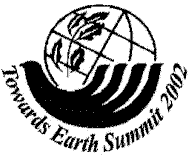
The 2002 World Summit on Sustainable Development will be held in Johannesburg, South Africa, from 2 to 11 September. This "Earth Summit" should deepen the global commitment to sustainable development and bring environmental issues to the fore.
There is wide consensus that the primary focus of the summit should be poverty, development and the environment. Poverty and underdevelopment are seen as the fundamental threats to environmental security and sustainable development.
Primarily, the summit offers an opportunity to strengthen the global commitment to sustainable development. Ratification of agreements such as the Kyoto and Biosafety Protocols could be a part of this commitment.
Clearly, the more people and organizations who are willing to contribute to the Earth Summit process and are willing to encourage others to do so, the more likely it is that the process will begin to build momentum. We each have a right, a role and a responsibility to contribute to sustainable development. Before Rio it was said that:
"While the Earth Summit will constitute a test of nations’ willingness to institute fundamental changes in economic behaviour, the challenges ahead will be far more daunting. Change is seldom easy."
Sustainable development is a dynamic process, and it is one that will continue to evolve and grow as lessons are learned and ideas re-examined. By reinvigorating the spirit of Rio we can begin to move to a deeper and broader level of sustainability.
For more information, please contact:
Rosalie
Gardiner, Policy Coordinator, UNED Forum, 3 Whitehall Court, London SW1A 2EL,
UK.
Fax: +44 20 7930589;
e-mail: [email protected];
www.earthsummit2002.org; or
Ms Zehra Aydin-Sipos, United Nations,
Division for Sustainable Development,
2 UN Plaza, Room DC2-2220,
New
York, New York 10017, USA.
Fax: +1 212 9631267;
e-mail: [email protected];
www.johannesburgsummit.org/

Thousands of initiatives and projects involving energy efficiency and renewable energy sources have shown how sustainable energy solutions can strongly contribute to protecting the environment and climate, and to developing European and global economies.
The World Sustainable Energy Day, a major international conference that highlights sustainable energy solutions from all over the world, took place in Wels, Austria on 1-2 March 2001. It showcased outstanding sustainable energy projects and initiatives worldwide and provided information on major European and international policy developments. More than 600 delegates from 63 countries attended the conference, which was accompanied by two seminars focusing on innovative biomass technologies and on rural electrification.
The winning projects of the Energy Globe Award 2001, the international award for sustainable energy solutions, was presented within the framework of the conference and the best initiatives, out of more than 1 000 submissions from 75 countries, were presented in detail.
The conference was followed by the "Energiesparmesse", one of the largest exhibitions on renewable energy sources and energy efficiency in the world, with more than 200 000 visitors. The events were organized by O.Ö. Energiesparverband, the regional energy agency of Upper Austria.
![]()
For more information, please contact:
Margit
Nagelstrasser, O.Ö. Energiesparverband, Landstraße 45,
A-4020 Linz,
Austria.
Fax: +43 732 65844383;
e-mail: [email protected];
www.esv.or.at
GLOSSARY/GLOSSAIRE/GLOSARIO |